Authors:
Ferran Altarriba Bertran, Katherine Isbister, Stuart Reeves
How might Donna Haraway's notion of "staying with the trouble" help HCI researchers design for resilience in more-than-human worlds? What does Terry Winograd, an early pioneer of working at the intersection of HCI and AI, think of contemporary LLM-based research? How can we knit together issues of identity and methodology in shaping the future of designerly HCI? How does it feel to 'be' a bat or to read LLM-generated poetry? In October 2024, inspired by the first Halfway to the Future (HttF) symposium held in Nottingham, United Kingdom, in 2019 [1], we hosted a design-oriented HCI gathering that addressed these and other questions [2,3]. More than a hundred attendees convened for three days in Santa Cruz, California, and engaged in intergenerational conversations about both timely and evergreen themes—ranging from considerations of humanness (and beyond) in design to the role of AI. As it looks like the HttF symposium may become a tradition, with others already stepping up to run a third one, we thought it would be appropriate to describe the event series in this article. We'll discuss the first HttF and how it was received, talk about how we built on and extended that in 2024, and what we see as the unique characteristics of the symposium that met some needs in our community.
The first Halfway to the Future in 2019 [4] was organized by the Mixed Reality Lab at the School of Computer Science at the University of Nottingham. It was originally conceived as an anniversary event for the lab, and the organizers decided to curate a series of keynotes by researchers who had deeply influenced their work, asking them to re-present a classic paper or book and contextualize it in the current times. Speakers included Steve Benford, Susanne Bødker, Bill Gaver, Christian Heath, Yvonne Rogers, and Lucy Suchman. Their work was anchored around various themes—mixed reality, arts and design-led approaches, AI, humans, and machines, ubiquitous computing, public and private spaces, and new approaches to research and design. HttF called for submissions related to these themes, leading to panels that brought together submitting authors with keynote speakers in discussions. In reconfiguring the conference format, HttF aimed to encourage greater space for reflection on past work, as well to explore how that past is seen by present research and what futures we might want as a result. It also aimed to support intergenerational interaction among researchers and deconstruct hierarchies. There were approximately 180 attendees and 42 long and short papers included in the ACM Digital Library [1]. Five years later, the program has been cited more than 700 times, which is considerable given the small scale of the venue and its sui generis status.
Two of us, Katherine and Ferran, attended HttF 2019 and were deeply inspired by the event. Its small scale, thematic arrangement, and intergenerational panel format led to unexpectedly rich conversations and connections. There was a sense of playfulness and possibility, and an engagement with history that can sometimes be missing from our future-facing venues. Instead of focusing on presenting their own work, participants discussed big ideas with great curiosity and proper contextualization. We were inspired enough to dream of hosting a follow-up event and reached out to the organizers for continuity. Stuart agreed to be a general chair as we planned the sequel.
HttF aimed to support intergenerational interaction among researchers and deconstruct hierarchies.
In 2023, we began planning. We wanted to keep the qualities we felt were key to the vibe we had enjoyed so much: anchoring the event with voices that invoked certain community concerns, keeping it small and inperson, including demos, and making sure accepted submissions made it into the ACM Digital Library. We also had additions. First, we introduced an opening fireside chat between two scholars who, despite practicing outside our field, have greatly inspired HCI. Fred Turner of Stanford University (author of the classic book From Counterculture to Cyberculture) interviewed Donna Haraway of University of California, Santa Cruz about her long-standing explorations of themes, including more than humanness, which she wrote about in her book Staying with the Trouble, and cyberfeminism, which she explored in her well-known essay "A Cyborg Manifesto." Second, instead of only showcasing demos from local researchers, we invited paper submissions to be presented in a poster/demo session. Finally, we took full advantage of Santa Cruz as a seaside city and hosted the event in a room overlooking the ocean. Santa Cruz is also known for its creativity and quirkiness: We modeled that atmosphere in our curation of the event and how we ran the sessions (e.g., in the more-than-human theme panel, organizers had everyone rotate their chairs to face the ocean view).
HttF 2024 was structured around four themes: plurality of humanness (with Shaowen Bardzell as a key voice), more than humanness (Ron Wakkary), reflective practices with AI (Terry Winograd), and new ways of knowing (Paul Dourish and Kristina Höök). These core speakers anchored panels of brief paper presentations, followed by audience discussion. Between these panels, two poster/demo sessions occurred. Twenty-five papers were accepted as panel presentations and 18 as posters/demos. They covered a broad spectrum of themes within designerly HCI, ranging from permission to muck about [5] to directions for degradation [6]. The demos included exploratory interfaces, such as an LLM-powered Ping Pong–based ideation tool and a utility belt for an agricultural robot [2].
In an end-of-event discussion session, attendees expressed the same positive reaction to HttF 2024 as we had to the original 2019 event, to the point that someone stepped up to run the next one. Next, we share commonalities from the two symposia we'd like to carry forward, with the hope that they may also have value for others interested in organizing more conversational and thematic HCI gatherings, beyond the scope of HttF.
What stuck from the first two HttFs. Certain qualities from both events were key to the quality of conversations. First was our call for thought-provoking ideas rather than results of consolidated research—a focus that was implicit in 2019 and became explicit in the 2024 call for papers [2]. Second was a program shaped to privilege conversation over presentation (e.g., having roundtable discussions as the main component of panels), which set the stage for people to shift attention from their own research toward broader, bigger concerns. Additionally, anchoring conversations around intergenerational concerns allowed participants to build bridges between their work on current topics and more profound and long-lasting ideas. This led to more talks by experienced members of our community, in contrast to conferences that have mostly Ph.D. student and postdoc presenters. Finally, we made an effort to curate these conversations just enough. That was on display in the themes in which these conversations were anchored, and in the tone we established, striving to always set the stage for playful, vibrant, and somewhat casual exchanges that made it inviting for all to participate, regardless of career stage and even if their thoughts were still being formed.
Open questions remaining. The 2024 organizing team met for discussions that supplemented the end-of-day reflection at the event. Here are some questions that came up, which will be the work of the next organizing committee:
- Many felt engaging one another in person was key to the quality of conversations but also noted it left people out. Could there be ways of incorporating hybrid or online components and thus be more inclusive? What might be gained and lost?
- Some wished for more time for conversations to unfold. Should the event be longer and less condensed? Could we experiment with other conversation formats?
- How often to reconvene? HttF 2024 happened five years after the first. Some thought this slowness allowed for a sense of reflection. There are other HCI events, such as Aarhus's 10-year gathering, that perhaps help create a less rushed sense of community. What is the right cadence for HttF?
Key qualities to carry into other HCI gatherings. For those working outside of designerly HCI, here are some key takeaways that might apply to organizing your thematic event, taking inspiration in the successful principles of the HttF gatherings:
- Curate intergenerational conversations around important disciplinary concerns.
- Privilege panel discussions over paper presentations, at a small event scale.
- Nurture a sense of playfulness and provocation (the same principle should apply in the reviewing process).
- Strive for a slower pace.
Like Zeno, if HCI researchers step forward only halfway every time, we will never fully arrive at the future. But we can become wiser about meeting the future by engaging in deep conversation within our community about what we have already learned and where we would like to go next. We hope to see some readers of this article at the next HttF.
1. Fischer, J.E., Martindale, S., Porcheron, M., Reeves, S., and Spence, J., eds. Proc. of the Halfway to the Future Symposium 2019. ACM, 2019; http://bit.ly/3I9iWeS
2. Halfway to the Future Symposium 2024; http://bit.ly/3HT4RCh
3. Proc. of the Halfway to the Future Symposium. ACM, 2024; http://bit.ly/3JWL85a
4. Halfway to the Future Symposium 2019; http://bit.ly/41H6utp
5. Lindley, J. and Green, D.P. Permission to muck about, knowledge, and the grammar of intuition. Proc. of the Halfway to the Future Symposium. ACM, 2024, Article 1, 1–8; http://bit.ly/4m8Qcks
6. Bell, F. and Buechley, L. Directions for degradation: Multispecies entanglements with 3D printed biomaterials. Proc. of the Halfway to the Future Symposium. ACM, 2024, Article 18, 1–10; http://bit.ly/3IhYzw1
Ferran Altarriba Bertran is an associate professor at ERAM Escola Universitària de les Arts, where he leads the Playful Living Lab. His research explores how to design technology that helps people experience joy in their day-to-day, supporting ways of life that are both mindful, caring, and socioemotionally stimulating. [email protected]
Katherine Isbister is a professor of computational media at the University of California, Santa Cruz, where she directs the Social Emotional Technology Lab. Her team designs experiences combining HCI and games/play to heighten social and emotional connections and well-being. Her current projects include XR for shared scientific sensemaking and games to help foster climate resilience. [email protected]
Stuart Reeves is an associate professor in the School of Computer Science and a member of the Mixed Reality Lab and Horizon Digital Economy Research Institute at the University of Nottingham. His research interests span HCI, collaborative computing, and design research. His approach is strongly informed by ethnomethodology and conversation analysis. [email protected]
Copyright 2025 held by owners/authors
The Digital Library is published by the Association for Computing Machinery. Copyright © 2025 ACM, Inc.
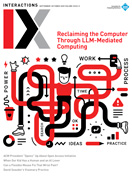
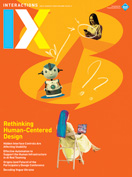
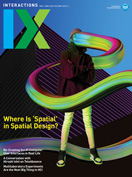

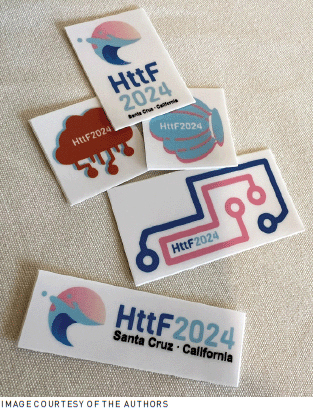
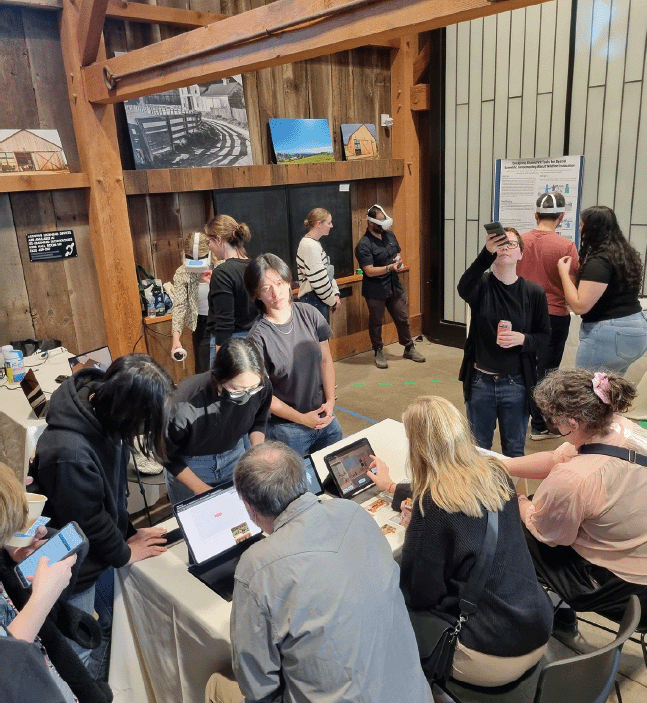
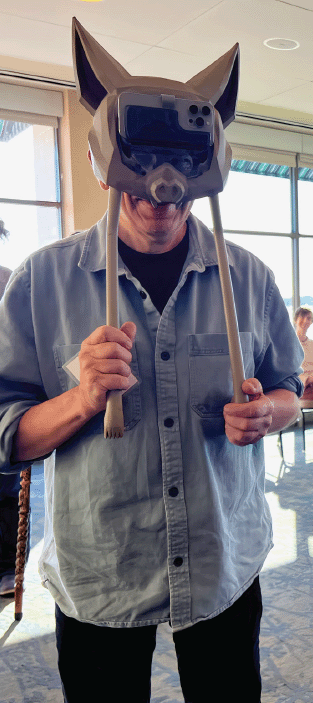




Post Comment
No Comments Found